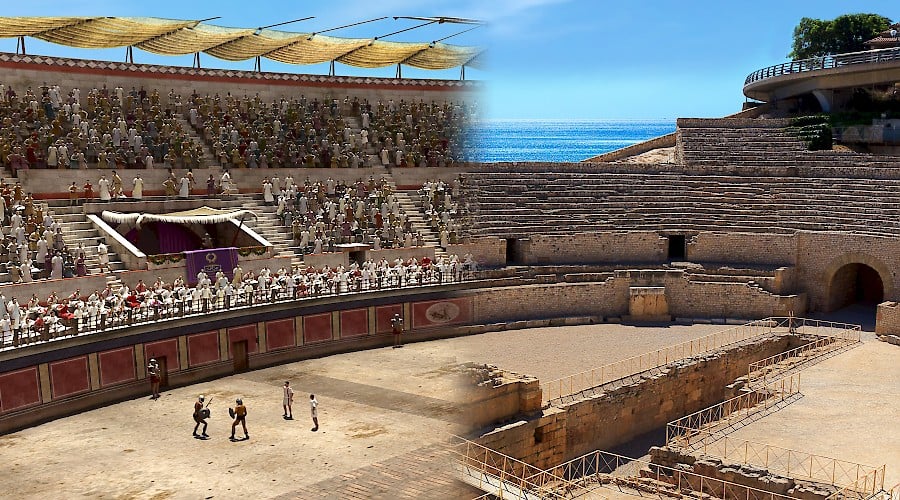Digital Media and Cultural Heritage

A EUNIC Washington D.C. conference on how technology can help us safeguard our common cultural heritage.
The conference Digital Media and the Challenge of Safeguarding Cultural Heritage: New Ways of Knowing About Our Past will focus on how new Information and Communication Technologies (ICT) are already playing an important role on the understanding and preservation of cultural heritage, bringing new possibilities and ways of communication.
What are new technologies doing to inform us about the past? How are they applied? Which controversies arise? How do we make them accessible to the public? These and other questions will be addressed with the help of our panelists, who will bring their expertise from European and American corporations.
This panel will be moderated by Dr. Alexander Nagel, Research Associate at the Smithsonian Institution’s National Museum of Natural History, originally from Berlin, Germany, that has lectured worldwide and actively supports the work of communities on preserving heritage of Yemen, Greece, Iran and the Middle East.
This event, part of the Protecting Our Heritage series run by the European Union Institutes of Culture and its network in Washington D.C., is organized by SPAIN arts & culture, the cultural program of the Embassy of Spain across the United States, with the collaboration of the Embassy of Italy, the Italian Institute of Culture and New York University (NYU) Washington, D.C.
Relieving History! We invite you to join a journey in time
- By Andrés Serrano, a founding partner of IMAGEEN, a leading Spanish company in the development, implementation and operation of virtual reality services in cultural tourism.
- New technologies allow us to enhance the valorization of the human cultural heritage by producing detailed but attractive digital and multimedia contents that help visitors imagine and understand the past (or almost to travel to the past). The visitors and citizens already have the devices that they need for these new experiences (smartphones, tablet PCs,… and very soon virtual reality glasses). Converting a historical site into a virtual museum is now possible.
Access, Bandwidth, Collaboration: The ABC’s of how technology enables the safekeeping of our cultural heritage
- By Shayna Skolnik, CEO and Co-founder of Navteca, a woman-owned technology company focusing on emerging technologies and IT innovation, like the cloud and virtual reality. Shayna is adept at forming strategic partnerships and relationships in the private and public sector and bridging the gap between highly technical staff and the business needs of the client. Selected as a Small Business Administration (SBA) Emerging Leader for 2015, Shayna leads the Programa Jovenes workforce initiative with Spain, and founded and leads the Science and Technology Committee for the Greater Washington Hispanic Chamber of Commerce.
- We live in an incredibly exciting era in which people have unprecedented access to technology and tools that allow us to collectively document our cultural heritage for future generations.The vast troves of information and media that are available via the cloud and the internet make cultural documentation attainable and accessible. The bandwidth that the internet and mobile phones provide, in themselves, are a huge factor and benefit in preserving cultural heritage around the world. Any person with a smartphone can now document items and experiences that will be of interest to future generations. This connectivity also enables a level of collaboration among scientists, researchers, students, educators, and the public that past generations could not have imagined possible. With these technological tools in hand, we have the building blocks we need to preserve our culture and history for the ages.
A Game of Tag can help Cultural Heritage
- By James Blake Wiener, Co-Founder and the Communications Director at Ancient History Encyclopedia (AHE) –the world’s largest and most visited e-resource for ancient history.
- Ancient History Encyclopedia (AHE), the world’s most comprehensive and visited e-resource for ancient history, operates on a system of linking content by “tags.” AHE content comes in the form of textual articles, images, videos, maps, timelines, and soon 3D models of ancient artifacts. Through AHE’s tagged content management system, the public can discover connections between events, places, objects, and historical personalities in non-linear ways that have, in the past, been impossible. Visitors to AHE can thus explore history by topic, geography, culture, era, and even by contextual relatedness. As content is interlinked automatically, AHE’s system of combining a variety of ways to (re-)present the past offers cultural preservationists, researchers, and educators a powerful and useful tool –while still being methodical and easy to learn– to help advance the cause of heritage and cultural patrimony everywhere.
Virtually Yours: How technology can personalize and transform the visitor’s journey
- By Dr. Niccolò Caderni, Chairman of ETT Solutions Ltd., a company offering multimedia services to museums and cultural venues. Dr. Caderni has held academic positions at Cambridge University, the University of California, and the University of Pavia, among others, and has contributed to a number of initiatives leveraging his interest and experience in technology, private equity, art collecting, and the fostering of innovation.
- The combination of augmented reality and virtual reality (AR/VR), and beacon technology has the power to transform the visitor’s experience. The visit can begin before, and last well after the actual time spent in the museum. Visitors can select personalized aspects of interest, and self-curate their tours. They can go on learning, sharing, playing or purchasing, and museums gather valuable data.